Fallen Angels: Birds of Paradise in Early Modern Europe
April 4, 2018
Art & Religion
 When birds of paradise first arrived to Europe, as dried specimens with legs and wings removed, they were seen in almost mythical terms — as angelic beings forever airborne, nourished by dew and the “nectar” of sunlight. Natalie Lawrence looks at how European naturalists of the 16th and 17th centuries attempted to make sense of these entirely novel and exotic creatures from the East.
Defining the Demonic
October 25, 2017
Books & Art & Religion
When birds of paradise first arrived to Europe, as dried specimens with legs and wings removed, they were seen in almost mythical terms — as angelic beings forever airborne, nourished by dew and the “nectar” of sunlight. Natalie Lawrence looks at how European naturalists of the 16th and 17th centuries attempted to make sense of these entirely novel and exotic creatures from the East.
Defining the Demonic
October 25, 2017
Books & Art & Religion
 Although Jacques Collin de Plancy’s Dictionnaire infernal, a monumental compendium of all things diabolical, was first published in 1818 to much success, it is the fabulously illustrated final edition of 1863 which secured the book as a landmark in the study and representation of demons. Ed Simon explores the work and how at its heart lies an unlikely but pertinent synthesis of the Enlightenment and the occult.
Master of Disaster, Ignatius Donnelly
September 27, 2017
Books & Literature & Science & Religion
Although Jacques Collin de Plancy’s Dictionnaire infernal, a monumental compendium of all things diabolical, was first published in 1818 to much success, it is the fabulously illustrated final edition of 1863 which secured the book as a landmark in the study and representation of demons. Ed Simon explores the work and how at its heart lies an unlikely but pertinent synthesis of the Enlightenment and the occult.
Master of Disaster, Ignatius Donnelly
September 27, 2017
Books & Literature & Science & Religion
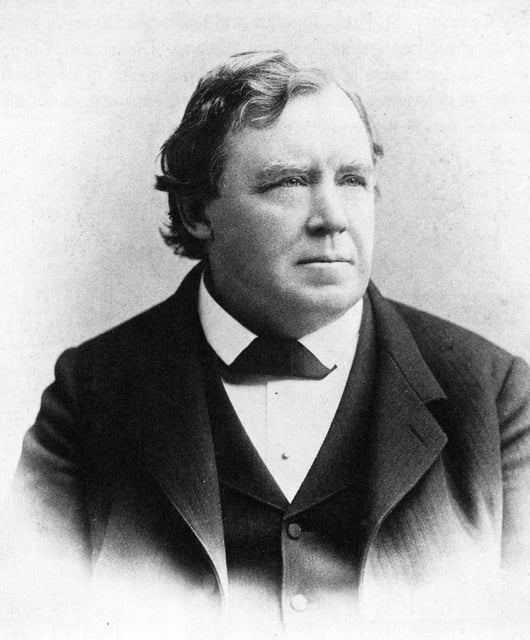 The destruction of Atlantis, cataclysmic comets, and a Manhattan tower made entirely from concrete and corpse — Carl Abbott on the life and work of a Minnesotan writer, and failed politician, with a mind primed for catastrophe.
Rescuing England: The Rhetoric of Imperialism and the Salvation Army
August 16, 2017
Books & Religion
The destruction of Atlantis, cataclysmic comets, and a Manhattan tower made entirely from concrete and corpse — Carl Abbott on the life and work of a Minnesotan writer, and failed politician, with a mind primed for catastrophe.
Rescuing England: The Rhetoric of Imperialism and the Salvation Army
August 16, 2017
Books & Religion
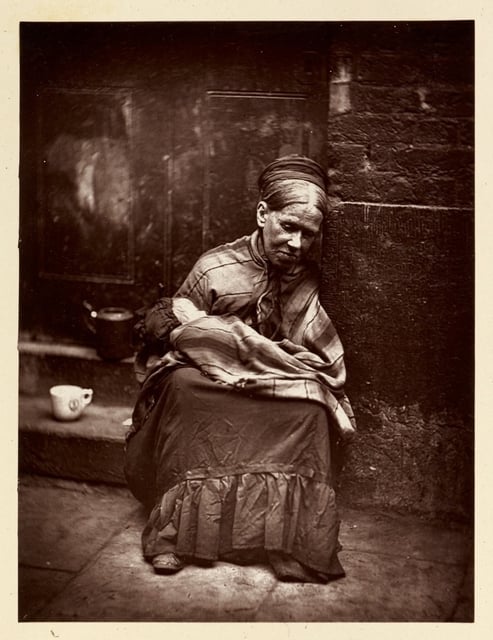 Ellen J. Stockstill on how William Booth, founder of the Salvation Army, placed the ideas and language of colonialism at the very heart of his vision for improving the lives of Victorian England’s poor.
Decoding the Morse: The History of 16th-Century Narcoleptic Walruses
June 14, 2017
History & Religion
Ellen J. Stockstill on how William Booth, founder of the Salvation Army, placed the ideas and language of colonialism at the very heart of his vision for improving the lives of Victorian England’s poor.
Decoding the Morse: The History of 16th-Century Narcoleptic Walruses
June 14, 2017
History & Religion
 Amongst the assorted curiosities described in Olaus Magnus’ 1555 tome on Nordic life was the morse — a hirsuite, fearsome walrus-like beast, that was said to snooze upon cliffs while hanging by its teeth. Natalie Lawrence explores the career of this chimerical wonder, shaped both by scholarly images of a fabulous north and the grisly corporeality of the trade in walrus skins, teeth, and bone.
Woodcuts and Witches
May 4, 2017
Books & Art & History & Religion
Amongst the assorted curiosities described in Olaus Magnus’ 1555 tome on Nordic life was the morse — a hirsuite, fearsome walrus-like beast, that was said to snooze upon cliffs while hanging by its teeth. Natalie Lawrence explores the career of this chimerical wonder, shaped both by scholarly images of a fabulous north and the grisly corporeality of the trade in walrus skins, teeth, and bone.
Woodcuts and Witches
May 4, 2017
Books & Art & History & Religion
 Jon Crabb on the witch-craze of Early Modern Europe, and how the concurrent rise of the mass-produced woodcut helped forge the archetype of the broom-riding crone — complete with cauldron and cats — so familiar today.
Voltaire and the Buddha
March 8, 2017
Religion
Jon Crabb on the witch-craze of Early Modern Europe, and how the concurrent rise of the mass-produced woodcut helped forge the archetype of the broom-riding crone — complete with cauldron and cats — so familiar today.
Voltaire and the Buddha
March 8, 2017
Religion
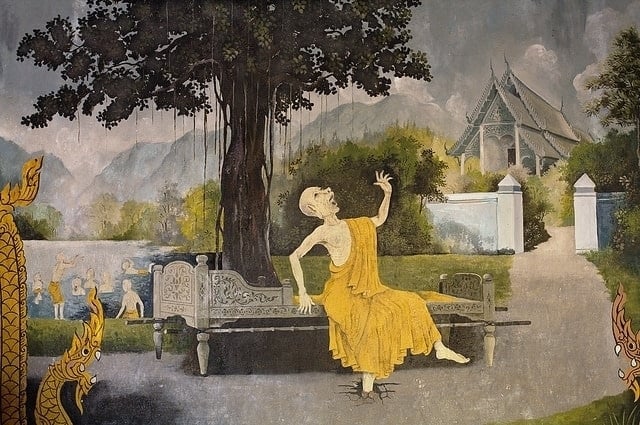 Donald S. Lopez, Jr. looks at Voltaire’s early reflections on Buddhism and how, in his desire to separate the Buddha’s teachings from the trappings of religion, the French Enlightenment thinker prefigured an approach now familiar in the West.
George Washington: A Descendant of Odin?
February 8, 2017
Books & History & Religion
Donald S. Lopez, Jr. looks at Voltaire’s early reflections on Buddhism and how, in his desire to separate the Buddha’s teachings from the trappings of religion, the French Enlightenment thinker prefigured an approach now familiar in the West.
George Washington: A Descendant of Odin?
February 8, 2017
Books & History & Religion
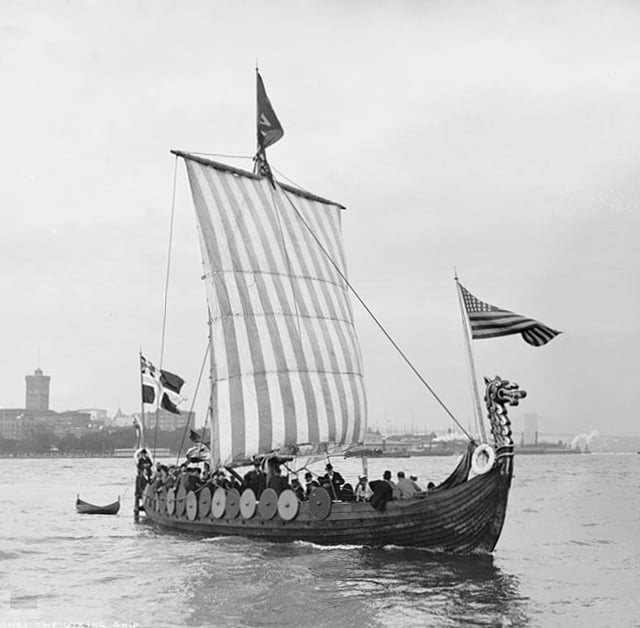 Yvonne Seale on a bizarre and fanciful piece of genealogical scholarship and what it tells us about identity in late 19th-century America.
Out of Their Love They Made It: A Visual History of Buraq
September 21, 2016
Art & Religion
Yvonne Seale on a bizarre and fanciful piece of genealogical scholarship and what it tells us about identity in late 19th-century America.
Out of Their Love They Made It: A Visual History of Buraq
September 21, 2016
Art & Religion
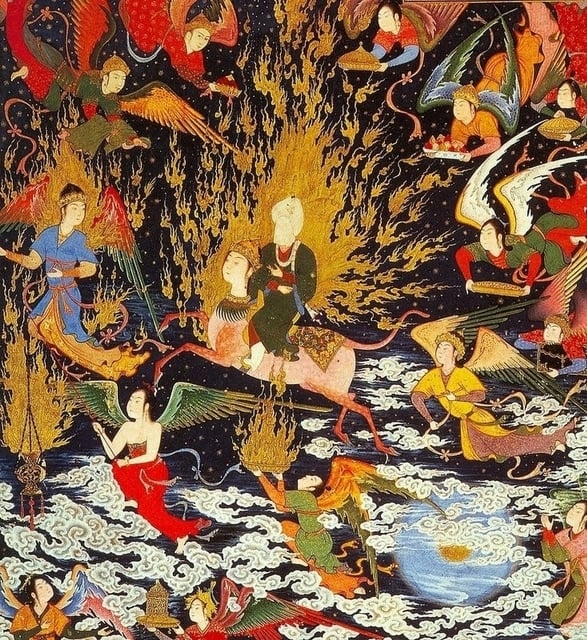 Although mentioned only briefly in the Qur’an, the story of the Prophet Muhammad’s night journey to heaven astride a winged horse called Buraq has long caught the imagination of artists. Yasmine Seale charts the many representations of this enigmatic steed, from early Islamic scripture to contemporary Delhi, and explores what such a figure can tell us about the nature of belief.
Francis van Helmont and the Alphabet of Nature
June 1, 2016
Philosophy & Religion
Although mentioned only briefly in the Qur’an, the story of the Prophet Muhammad’s night journey to heaven astride a winged horse called Buraq has long caught the imagination of artists. Yasmine Seale charts the many representations of this enigmatic steed, from early Islamic scripture to contemporary Delhi, and explores what such a figure can tell us about the nature of belief.
Francis van Helmont and the Alphabet of Nature
June 1, 2016
Philosophy & Religion
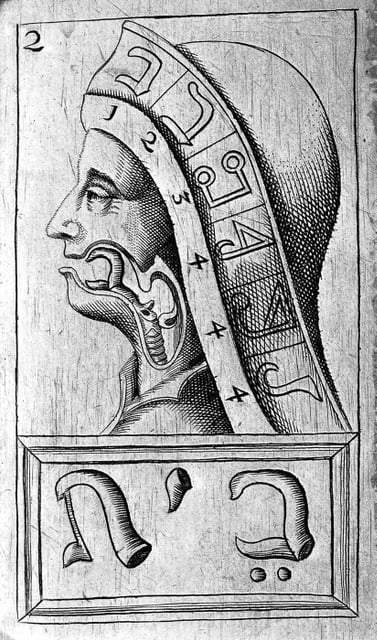 Largely forgotten today in the shadow of his more famous father, the 17th-century Flemish alchemist Francis van Helmont influenced and was friends with the likes of Locke, Boyle, and Leibniz. While imprisoned by the Inquisition, in between torture sessions, he wrote his Alphabet of Nature on the idea of a universal “natural” language. Je Wilson explores.
Divine Comedy: Lucian Versus The Gods
March 23, 2016
Books & Religion
Largely forgotten today in the shadow of his more famous father, the 17th-century Flemish alchemist Francis van Helmont influenced and was friends with the likes of Locke, Boyle, and Leibniz. While imprisoned by the Inquisition, in between torture sessions, he wrote his Alphabet of Nature on the idea of a universal “natural” language. Je Wilson explores.
Divine Comedy: Lucian Versus The Gods
March 23, 2016
Books & Religion
 With the twenty-six short comic dialogues that made up Dialogues of the Gods, the 2nd-century writer Lucian of Samosata took the popular images of the Greek gods and redrew them as greedy, sex-obsessed, power-mad despots. Nicholas Jeeves, editor of a new edition for PDR Press, explores the story behind the work and its reception in the English-speaking world.
Worlds Without End
December 9, 2015
Science & Religion
With the twenty-six short comic dialogues that made up Dialogues of the Gods, the 2nd-century writer Lucian of Samosata took the popular images of the Greek gods and redrew them as greedy, sex-obsessed, power-mad despots. Nicholas Jeeves, editor of a new edition for PDR Press, explores the story behind the work and its reception in the English-speaking world.
Worlds Without End
December 9, 2015
Science & Religion
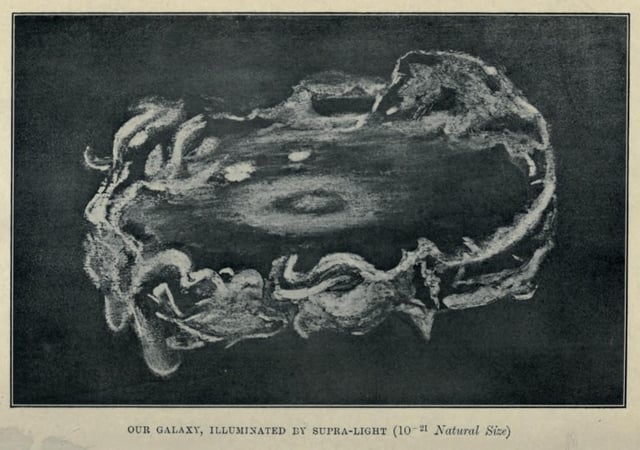 At the end of the 19th century, inspired by radical advances in technology, physicists asserted the reality of invisible worlds — an idea through which they sought to address not only psychic phenomena such as telepathy, but also spiritual questions around the soul and immortality. Philip Ball explores this fascinating history, and how in this turn to the unseen in the face of mystery there exists a parallel to quantum physics today.
A Bestiary of Sir Thomas Browne
June 17, 2015
Books & Religion
At the end of the 19th century, inspired by radical advances in technology, physicists asserted the reality of invisible worlds — an idea through which they sought to address not only psychic phenomena such as telepathy, but also spiritual questions around the soul and immortality. Philip Ball explores this fascinating history, and how in this turn to the unseen in the face of mystery there exists a parallel to quantum physics today.
A Bestiary of Sir Thomas Browne
June 17, 2015
Books & Religion
 Hugh Aldersey-Williams takes a tour through Thomas Browne’s Pseudodoxia Epidemica, a work which sees one of the 17th-century’s greatest writers stylishly debunk all manner of myths, in particular those relating to the world of animals.
The Poet, the Physician and the Birth of the Modern Vampire
October 16, 2014
Books & Literature & Religion
From that famed night of ghost-stories in a Lake Geneva villa in 1816, as well as Frankenstein’s monster, there arose that other great figure of 19th-century gothic fiction – the vampire – a creation of Lord Byron’s personal physician John Polidori. Andrew McConnell Stott explores how a fractious relationship between Polidori and his poet employer lies behind the tale, with Byron himself providing a model for the blood-sucking aristocratic figure of the legend we are familiar with today.
Ghostwriter and Ghost: The Strange Case of Pearl Curran & Patience Worth
September 17, 2014
Books & Poems & Literature & Religion
In early 20th-century St. Louis, Pearl Curran claimed to have conjured a long-dead New England puritan named Patience Worth through a Ouija board. Although mostly unknown today, the resulting books, poems, and plays that Worth “dictated” to Curran earned great praise at the time. Ed Simon investigates the curious and nearly forgotten literary fruits of a “ghost” and her ghostwriter.
In the Image of God: John Comenius and the First Children’s Picture Book
May 14, 2014
Books & Religion
In the mid 17th-century John Comenius published what many consider to be the first picture book dedicated to the education of young children, Orbis Sensualium Pictus – or The World of Things Obvious to the Senses drawn in Pictures, as it was rendered in English. Charles McNamara explores how, contrary to Comenius’ assertions, the book can be seen to be as much about the invisible world as the visible.
Darkness Over All: John Robison and the Birth of the Illuminati Conspiracy
April 2, 2014
History & Religion
Hugh Aldersey-Williams takes a tour through Thomas Browne’s Pseudodoxia Epidemica, a work which sees one of the 17th-century’s greatest writers stylishly debunk all manner of myths, in particular those relating to the world of animals.
The Poet, the Physician and the Birth of the Modern Vampire
October 16, 2014
Books & Literature & Religion
From that famed night of ghost-stories in a Lake Geneva villa in 1816, as well as Frankenstein’s monster, there arose that other great figure of 19th-century gothic fiction – the vampire – a creation of Lord Byron’s personal physician John Polidori. Andrew McConnell Stott explores how a fractious relationship between Polidori and his poet employer lies behind the tale, with Byron himself providing a model for the blood-sucking aristocratic figure of the legend we are familiar with today.
Ghostwriter and Ghost: The Strange Case of Pearl Curran & Patience Worth
September 17, 2014
Books & Poems & Literature & Religion
In early 20th-century St. Louis, Pearl Curran claimed to have conjured a long-dead New England puritan named Patience Worth through a Ouija board. Although mostly unknown today, the resulting books, poems, and plays that Worth “dictated” to Curran earned great praise at the time. Ed Simon investigates the curious and nearly forgotten literary fruits of a “ghost” and her ghostwriter.
In the Image of God: John Comenius and the First Children’s Picture Book
May 14, 2014
Books & Religion
In the mid 17th-century John Comenius published what many consider to be the first picture book dedicated to the education of young children, Orbis Sensualium Pictus – or The World of Things Obvious to the Senses drawn in Pictures, as it was rendered in English. Charles McNamara explores how, contrary to Comenius’ assertions, the book can be seen to be as much about the invisible world as the visible.
Darkness Over All: John Robison and the Birth of the Illuminati Conspiracy
April 2, 2014
History & Religion
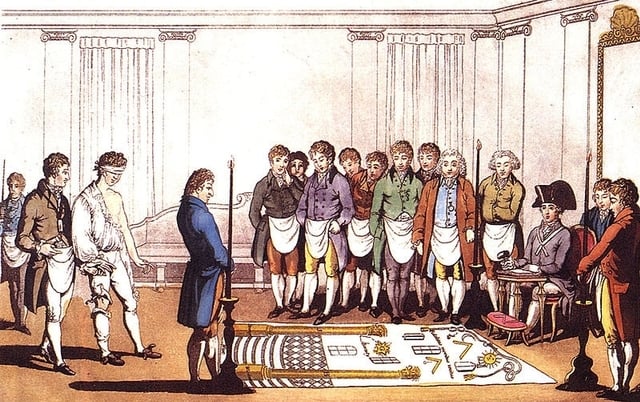 Conspiracy theories of a secretive power elite seeking global domination have long held a place in the modern imagination. Mike Jay explores the idea’s beginnings in the writings of John Robison, a Scottish scientist who maintained that the French revolution was the work of a covert Masonic cell known as the Illuminati.
Alfred Russel Wallace: a Heretic’s Heretic
October 30, 2013
Science & Religion
Conspiracy theories of a secretive power elite seeking global domination have long held a place in the modern imagination. Mike Jay explores the idea’s beginnings in the writings of John Robison, a Scottish scientist who maintained that the French revolution was the work of a covert Masonic cell known as the Illuminati.
Alfred Russel Wallace: a Heretic’s Heretic
October 30, 2013
Science & Religion
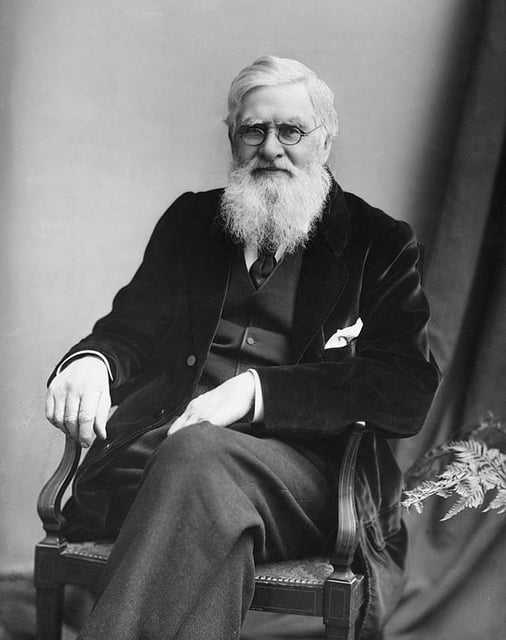 On the centenary of his death, Michael A. Flannery looks back at how Alfred Russel Wallace’s take on evolution, which radically reintroduced notions of purpose and design, still speaks to us in a post-Darwin world where problems of sentience and of the origin of life remain, some would argue, as intractable as ever.
Sir Arthur and the Fairies
June 12, 2013
Books & Photography & History & Religion & Events
On the centenary of his death, Michael A. Flannery looks back at how Alfred Russel Wallace’s take on evolution, which radically reintroduced notions of purpose and design, still speaks to us in a post-Darwin world where problems of sentience and of the origin of life remain, some would argue, as intractable as ever.
Sir Arthur and the Fairies
June 12, 2013
Books & Photography & History & Religion & Events
 In the spring of 1920, at the beginning of a growing fascination with spiritualism brought on by the death of his son and brother in WWI, Arthur Conan Doyle took up the case of the Cottingley Fairies. Mary Losure explores how the creator of Sherlock Holmes became convinced that the ‘fairy photographs’ taken by two girls from Yorkshire were real.
Athanasius Kircher and the Hieroglyphic Sphinx
May 16, 2013
Books & Art & History & Religion
More than 170 years before Jean-François Champollion had the first real success in translating Egyptian hieroglyphs, the 17th century Jesuit scholar Athanasius Kircher was convinced he had cracked it. He was very wrong. Daniel Stolzenberg looks at Kircher’s Egyptian Oedipus, a book that has been called “one of the most learned monstrosities of all times.”
The Redemption of Saint Anthony
March 7, 2013
Books & Art & Religion
In the spring of 1920, at the beginning of a growing fascination with spiritualism brought on by the death of his son and brother in WWI, Arthur Conan Doyle took up the case of the Cottingley Fairies. Mary Losure explores how the creator of Sherlock Holmes became convinced that the ‘fairy photographs’ taken by two girls from Yorkshire were real.
Athanasius Kircher and the Hieroglyphic Sphinx
May 16, 2013
Books & Art & History & Religion
More than 170 years before Jean-François Champollion had the first real success in translating Egyptian hieroglyphs, the 17th century Jesuit scholar Athanasius Kircher was convinced he had cracked it. He was very wrong. Daniel Stolzenberg looks at Kircher’s Egyptian Oedipus, a book that has been called “one of the most learned monstrosities of all times.”
The Redemption of Saint Anthony
March 7, 2013
Books & Art & Religion
 Gustave Flaubert, best known for his masterpiece Madame Bovary, spent nearly thirty years working on a surreal and largely ‘unreadable’ retelling of the temptation of Saint Anthony. Colin Dickey explores how it was only in the dark and compelling illustrations of Odilon Redon, made years later, that Flaubert’s strangest work finally came to life.
The Erotic Dreams of Emanuel Swedenborg
January 24, 2013
Philosophy & Religion
During the time of his “spiritual awakening” in 1744 the scientist and philosopher Emanuel Swedenborg kept a dream diary. Richard Lines looks at how, among the heavenly visions, there were also erotic dreams, the significance of which has been long overlooked.
The Last Great Explorer: William F. Warren and the Search for Eden
September 6, 2012
Books & Science & Philosophy & Religion
Of all the attempts throughout history to geographically locate the Garden of Eden one of the most compelling was that set out by minister and president of Boston University, William F. Warren. Brook Wilensky-Lanford looks at the ideas of the man who, in his book Paradise Found, proposed the home of all humanity to be at the North Pole.
Navigating Dürer’s Woodcuts for The Ship of Fools
October 25, 2011
Books & Art & Religion
Gustave Flaubert, best known for his masterpiece Madame Bovary, spent nearly thirty years working on a surreal and largely ‘unreadable’ retelling of the temptation of Saint Anthony. Colin Dickey explores how it was only in the dark and compelling illustrations of Odilon Redon, made years later, that Flaubert’s strangest work finally came to life.
The Erotic Dreams of Emanuel Swedenborg
January 24, 2013
Philosophy & Religion
During the time of his “spiritual awakening” in 1744 the scientist and philosopher Emanuel Swedenborg kept a dream diary. Richard Lines looks at how, among the heavenly visions, there were also erotic dreams, the significance of which has been long overlooked.
The Last Great Explorer: William F. Warren and the Search for Eden
September 6, 2012
Books & Science & Philosophy & Religion
Of all the attempts throughout history to geographically locate the Garden of Eden one of the most compelling was that set out by minister and president of Boston University, William F. Warren. Brook Wilensky-Lanford looks at the ideas of the man who, in his book Paradise Found, proposed the home of all humanity to be at the North Pole.
Navigating Dürer’s Woodcuts for The Ship of Fools
October 25, 2011
Books & Art & Religion
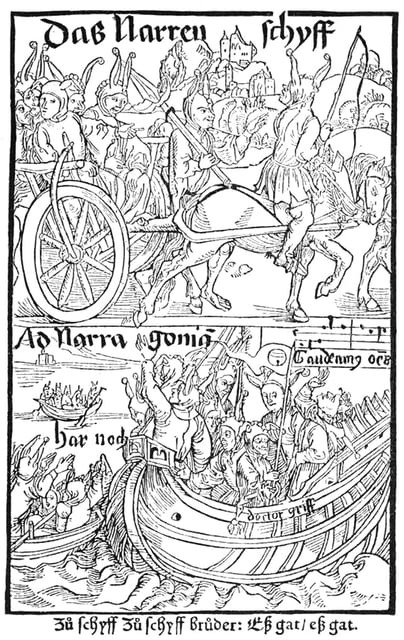 At the start of his career, as a young man in his twenties, Albrecht Dürer created a series of woodcuts to illustrate Sebastian Brant’s The Ship of Fools of 1494. Dürer scholar Rangsook Yoon explores the significance of these early pieces and how in their subtlety of allegory they show promise of his masterpieces to come.
Robert Fludd and His Images of The Divine
September 13, 2011
Books & Science & Philosophy & Art & Religion
At the start of his career, as a young man in his twenties, Albrecht Dürer created a series of woodcuts to illustrate Sebastian Brant’s The Ship of Fools of 1494. Dürer scholar Rangsook Yoon explores the significance of these early pieces and how in their subtlety of allegory they show promise of his masterpieces to come.
Robert Fludd and His Images of The Divine
September 13, 2011
Books & Science & Philosophy & Art & Religion
 Between 1617 and 1621 the English physician and polymath Robert Fludd published his masterwork Utriusque Cosmi, a book split into two volumes and packed with over 60 intricate engravings. Urszula Szulakowska explores the philosophical and theological ideas behind the extraordinary images found in the second part of the work.
Was Charles Darwin an Atheist?
June 28, 2011
Science & History & Religion
Between 1617 and 1621 the English physician and polymath Robert Fludd published his masterwork Utriusque Cosmi, a book split into two volumes and packed with over 60 intricate engravings. Urszula Szulakowska explores the philosophical and theological ideas behind the extraordinary images found in the second part of the work.
Was Charles Darwin an Atheist?
June 28, 2011
Science & History & Religion
 Leading Darwin expert and founder of Darwin Online, John van Wyhe, challenges the popular assumption that Darwin’s theory of evolution corresponded with a loss of religious belief.
Beatus of Liébana
April 18, 2011
Books & Art & Religion
Leading Darwin expert and founder of Darwin Online, John van Wyhe, challenges the popular assumption that Darwin’s theory of evolution corresponded with a loss of religious belief.
Beatus of Liébana
April 18, 2011
Books & Art & Religion
 In a monastery in the mountains of northern Spain, 700 years after the Book of Revelations was written, a monk set down to illustrate a collection of writings he had compiled about this most vivid and apocalyptic of the New Testament books. Throughout the next few centuries his depictions of multi-headed beasts, decapitated sinners, and trumpet blowing angels, would be copied over and over again in various versions of the manuscript. John Williams, author of The Illustrated Beatus, introduces Beatus of Liébana and his Commentary on the Apocalypse.
Bugs and Beasts Before the Law
March 27, 2011
Books & History & Religion
In a monastery in the mountains of northern Spain, 700 years after the Book of Revelations was written, a monk set down to illustrate a collection of writings he had compiled about this most vivid and apocalyptic of the New Testament books. Throughout the next few centuries his depictions of multi-headed beasts, decapitated sinners, and trumpet blowing angels, would be copied over and over again in various versions of the manuscript. John Williams, author of The Illustrated Beatus, introduces Beatus of Liébana and his Commentary on the Apocalypse.
Bugs and Beasts Before the Law
March 27, 2011
Books & History & Religion
 Murderous pigs sent to the gallows, sparrows prosecuted for chattering in church, a gang of thieving rats let off on a wholly technical acquittal – theoretical psychologist and author Nicholas Humphrey* explores the strange world of medieval animal trials.
Christopher Smart’s Jubilate Agno
January 31, 2011
Poems & Literature & Religion
Murderous pigs sent to the gallows, sparrows prosecuted for chattering in church, a gang of thieving rats let off on a wholly technical acquittal – theoretical psychologist and author Nicholas Humphrey* explores the strange world of medieval animal trials.
Christopher Smart’s Jubilate Agno
January 31, 2011
Poems & Literature & Religion
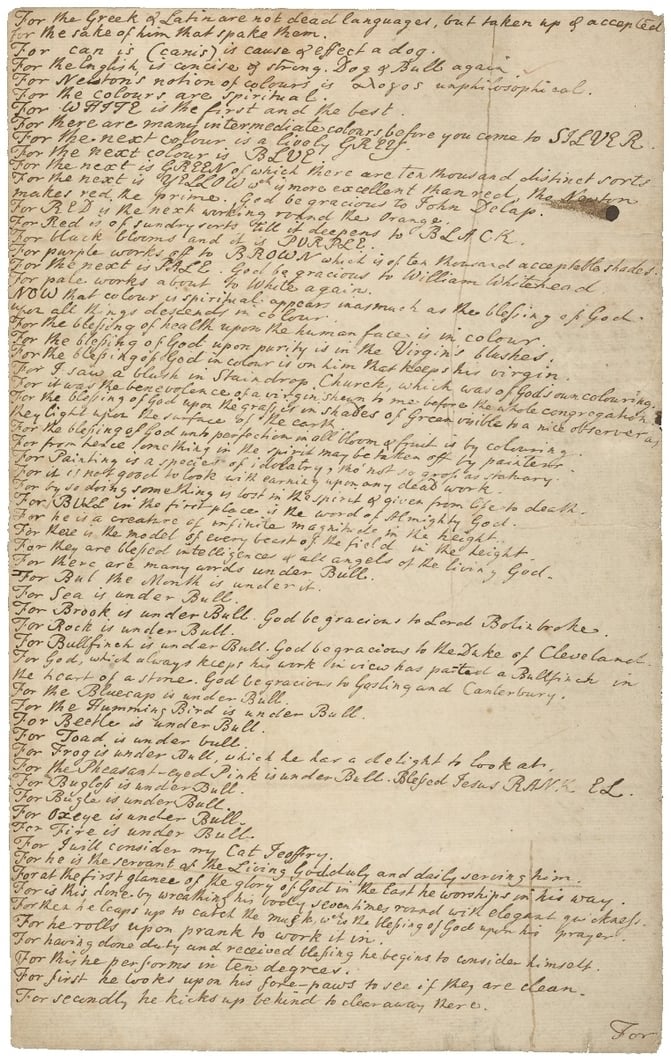 The poet Christopher Smart — also known as “Kit Smart”, “Kitty Smart”, “Jack Smart” and, on occasion, “Mrs Mary Midnight” — was a well known figure in 18th-century London. Nowadays he is perhaps best known for considering his cat Jeoffry. Writer and broadcaster Frank Key looks at Smart’s weird and wonderful Jubilate Agno.
Ernst Haeckel and the Unity of Culture
January 24, 2011
Science & Philosophy & Art & Religion
The poet Christopher Smart — also known as “Kit Smart”, “Kitty Smart”, “Jack Smart” and, on occasion, “Mrs Mary Midnight” — was a well known figure in 18th-century London. Nowadays he is perhaps best known for considering his cat Jeoffry. Writer and broadcaster Frank Key looks at Smart’s weird and wonderful Jubilate Agno.
Ernst Haeckel and the Unity of Culture
January 24, 2011
Science & Philosophy & Art & Religion
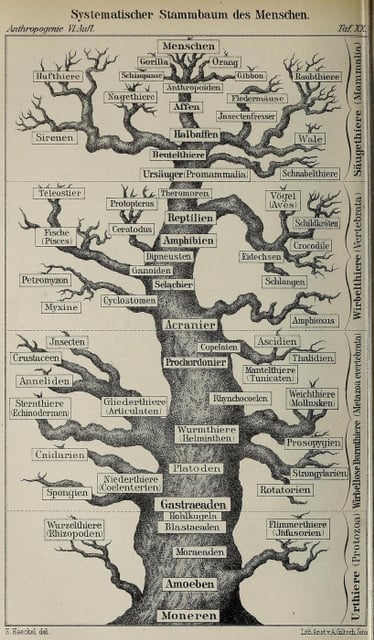 In addition to describing and naming thousands of new species the German biologist and philosopher Ernst Haeckel was behind some of history’s most impressive meetings of science and art. Dr Mario A. Di Gregorio explores Haeckel’s unique idea of “monism” which lies behind the mesmerising illustrations of his most famous work, Kunstformen Der Natur.
In addition to describing and naming thousands of new species the German biologist and philosopher Ernst Haeckel was behind some of history’s most impressive meetings of science and art. Dr Mario A. Di Gregorio explores Haeckel’s unique idea of “monism” which lies behind the mesmerising illustrations of his most famous work, Kunstformen Der Natur.
 When birds of paradise first arrived to Europe, as dried specimens with legs and wings removed, they were seen in almost mythical terms — as angelic beings forever airborne, nourished by dew and the “nectar” of sunlight. Natalie Lawrence looks at how European naturalists of the 16th and 17th centuries attempted to make sense of these entirely novel and exotic creatures from the East.
Defining the Demonic
October 25, 2017
Books & Art & Religion
When birds of paradise first arrived to Europe, as dried specimens with legs and wings removed, they were seen in almost mythical terms — as angelic beings forever airborne, nourished by dew and the “nectar” of sunlight. Natalie Lawrence looks at how European naturalists of the 16th and 17th centuries attempted to make sense of these entirely novel and exotic creatures from the East.
Defining the Demonic
October 25, 2017
Books & Art & Religion
 Although Jacques Collin de Plancy’s Dictionnaire infernal, a monumental compendium of all things diabolical, was first published in 1818 to much success, it is the fabulously illustrated final edition of 1863 which secured the book as a landmark in the study and representation of demons. Ed Simon explores the work and how at its heart lies an unlikely but pertinent synthesis of the Enlightenment and the occult.
Master of Disaster, Ignatius Donnelly
September 27, 2017
Books & Literature & Science & Religion
Although Jacques Collin de Plancy’s Dictionnaire infernal, a monumental compendium of all things diabolical, was first published in 1818 to much success, it is the fabulously illustrated final edition of 1863 which secured the book as a landmark in the study and representation of demons. Ed Simon explores the work and how at its heart lies an unlikely but pertinent synthesis of the Enlightenment and the occult.
Master of Disaster, Ignatius Donnelly
September 27, 2017
Books & Literature & Science & Religion
 The destruction of Atlantis, cataclysmic comets, and a Manhattan tower made entirely from concrete and corpse — Carl Abbott on the life and work of a Minnesotan writer, and failed politician, with a mind primed for catastrophe.
Rescuing England: The Rhetoric of Imperialism and the Salvation Army
August 16, 2017
Books & Religion
The destruction of Atlantis, cataclysmic comets, and a Manhattan tower made entirely from concrete and corpse — Carl Abbott on the life and work of a Minnesotan writer, and failed politician, with a mind primed for catastrophe.
Rescuing England: The Rhetoric of Imperialism and the Salvation Army
August 16, 2017
Books & Religion
 Ellen J. Stockstill on how William Booth, founder of the Salvation Army, placed the ideas and language of colonialism at the very heart of his vision for improving the lives of Victorian England’s poor.
Decoding the Morse: The History of 16th-Century Narcoleptic Walruses
June 14, 2017
History & Religion
Ellen J. Stockstill on how William Booth, founder of the Salvation Army, placed the ideas and language of colonialism at the very heart of his vision for improving the lives of Victorian England’s poor.
Decoding the Morse: The History of 16th-Century Narcoleptic Walruses
June 14, 2017
History & Religion
 Amongst the assorted curiosities described in Olaus Magnus’ 1555 tome on Nordic life was the morse — a hirsuite, fearsome walrus-like beast, that was said to snooze upon cliffs while hanging by its teeth. Natalie Lawrence explores the career of this chimerical wonder, shaped both by scholarly images of a fabulous north and the grisly corporeality of the trade in walrus skins, teeth, and bone.
Woodcuts and Witches
May 4, 2017
Books & Art & History & Religion
Amongst the assorted curiosities described in Olaus Magnus’ 1555 tome on Nordic life was the morse — a hirsuite, fearsome walrus-like beast, that was said to snooze upon cliffs while hanging by its teeth. Natalie Lawrence explores the career of this chimerical wonder, shaped both by scholarly images of a fabulous north and the grisly corporeality of the trade in walrus skins, teeth, and bone.
Woodcuts and Witches
May 4, 2017
Books & Art & History & Religion
 Jon Crabb on the witch-craze of Early Modern Europe, and how the concurrent rise of the mass-produced woodcut helped forge the archetype of the broom-riding crone — complete with cauldron and cats — so familiar today.
Voltaire and the Buddha
March 8, 2017
Religion
Jon Crabb on the witch-craze of Early Modern Europe, and how the concurrent rise of the mass-produced woodcut helped forge the archetype of the broom-riding crone — complete with cauldron and cats — so familiar today.
Voltaire and the Buddha
March 8, 2017
Religion
 Donald S. Lopez, Jr. looks at Voltaire’s early reflections on Buddhism and how, in his desire to separate the Buddha’s teachings from the trappings of religion, the French Enlightenment thinker prefigured an approach now familiar in the West.
George Washington: A Descendant of Odin?
February 8, 2017
Books & History & Religion
Donald S. Lopez, Jr. looks at Voltaire’s early reflections on Buddhism and how, in his desire to separate the Buddha’s teachings from the trappings of religion, the French Enlightenment thinker prefigured an approach now familiar in the West.
George Washington: A Descendant of Odin?
February 8, 2017
Books & History & Religion
 Yvonne Seale on a bizarre and fanciful piece of genealogical scholarship and what it tells us about identity in late 19th-century America.
Out of Their Love They Made It: A Visual History of Buraq
September 21, 2016
Art & Religion
Yvonne Seale on a bizarre and fanciful piece of genealogical scholarship and what it tells us about identity in late 19th-century America.
Out of Their Love They Made It: A Visual History of Buraq
September 21, 2016
Art & Religion
 Although mentioned only briefly in the Qur’an, the story of the Prophet Muhammad’s night journey to heaven astride a winged horse called Buraq has long caught the imagination of artists. Yasmine Seale charts the many representations of this enigmatic steed, from early Islamic scripture to contemporary Delhi, and explores what such a figure can tell us about the nature of belief.
Francis van Helmont and the Alphabet of Nature
June 1, 2016
Philosophy & Religion
Although mentioned only briefly in the Qur’an, the story of the Prophet Muhammad’s night journey to heaven astride a winged horse called Buraq has long caught the imagination of artists. Yasmine Seale charts the many representations of this enigmatic steed, from early Islamic scripture to contemporary Delhi, and explores what such a figure can tell us about the nature of belief.
Francis van Helmont and the Alphabet of Nature
June 1, 2016
Philosophy & Religion
 Largely forgotten today in the shadow of his more famous father, the 17th-century Flemish alchemist Francis van Helmont influenced and was friends with the likes of Locke, Boyle, and Leibniz. While imprisoned by the Inquisition, in between torture sessions, he wrote his Alphabet of Nature on the idea of a universal “natural” language. Je Wilson explores.
Divine Comedy: Lucian Versus The Gods
March 23, 2016
Books & Religion
Largely forgotten today in the shadow of his more famous father, the 17th-century Flemish alchemist Francis van Helmont influenced and was friends with the likes of Locke, Boyle, and Leibniz. While imprisoned by the Inquisition, in between torture sessions, he wrote his Alphabet of Nature on the idea of a universal “natural” language. Je Wilson explores.
Divine Comedy: Lucian Versus The Gods
March 23, 2016
Books & Religion
 With the twenty-six short comic dialogues that made up Dialogues of the Gods, the 2nd-century writer Lucian of Samosata took the popular images of the Greek gods and redrew them as greedy, sex-obsessed, power-mad despots. Nicholas Jeeves, editor of a new edition for PDR Press, explores the story behind the work and its reception in the English-speaking world.
Worlds Without End
December 9, 2015
Science & Religion
With the twenty-six short comic dialogues that made up Dialogues of the Gods, the 2nd-century writer Lucian of Samosata took the popular images of the Greek gods and redrew them as greedy, sex-obsessed, power-mad despots. Nicholas Jeeves, editor of a new edition for PDR Press, explores the story behind the work and its reception in the English-speaking world.
Worlds Without End
December 9, 2015
Science & Religion
 At the end of the 19th century, inspired by radical advances in technology, physicists asserted the reality of invisible worlds — an idea through which they sought to address not only psychic phenomena such as telepathy, but also spiritual questions around the soul and immortality. Philip Ball explores this fascinating history, and how in this turn to the unseen in the face of mystery there exists a parallel to quantum physics today.
A Bestiary of Sir Thomas Browne
June 17, 2015
Books & Religion
At the end of the 19th century, inspired by radical advances in technology, physicists asserted the reality of invisible worlds — an idea through which they sought to address not only psychic phenomena such as telepathy, but also spiritual questions around the soul and immortality. Philip Ball explores this fascinating history, and how in this turn to the unseen in the face of mystery there exists a parallel to quantum physics today.
A Bestiary of Sir Thomas Browne
June 17, 2015
Books & Religion
 Hugh Aldersey-Williams takes a tour through Thomas Browne’s Pseudodoxia Epidemica, a work which sees one of the 17th-century’s greatest writers stylishly debunk all manner of myths, in particular those relating to the world of animals.
The Poet, the Physician and the Birth of the Modern Vampire
October 16, 2014
Books & Literature & Religion
From that famed night of ghost-stories in a Lake Geneva villa in 1816, as well as Frankenstein’s monster, there arose that other great figure of 19th-century gothic fiction – the vampire – a creation of Lord Byron’s personal physician John Polidori. Andrew McConnell Stott explores how a fractious relationship between Polidori and his poet employer lies behind the tale, with Byron himself providing a model for the blood-sucking aristocratic figure of the legend we are familiar with today.
Ghostwriter and Ghost: The Strange Case of Pearl Curran & Patience Worth
September 17, 2014
Books & Poems & Literature & Religion
In early 20th-century St. Louis, Pearl Curran claimed to have conjured a long-dead New England puritan named Patience Worth through a Ouija board. Although mostly unknown today, the resulting books, poems, and plays that Worth “dictated” to Curran earned great praise at the time. Ed Simon investigates the curious and nearly forgotten literary fruits of a “ghost” and her ghostwriter.
In the Image of God: John Comenius and the First Children’s Picture Book
May 14, 2014
Books & Religion
In the mid 17th-century John Comenius published what many consider to be the first picture book dedicated to the education of young children, Orbis Sensualium Pictus – or The World of Things Obvious to the Senses drawn in Pictures, as it was rendered in English. Charles McNamara explores how, contrary to Comenius’ assertions, the book can be seen to be as much about the invisible world as the visible.
Darkness Over All: John Robison and the Birth of the Illuminati Conspiracy
April 2, 2014
History & Religion
Hugh Aldersey-Williams takes a tour through Thomas Browne’s Pseudodoxia Epidemica, a work which sees one of the 17th-century’s greatest writers stylishly debunk all manner of myths, in particular those relating to the world of animals.
The Poet, the Physician and the Birth of the Modern Vampire
October 16, 2014
Books & Literature & Religion
From that famed night of ghost-stories in a Lake Geneva villa in 1816, as well as Frankenstein’s monster, there arose that other great figure of 19th-century gothic fiction – the vampire – a creation of Lord Byron’s personal physician John Polidori. Andrew McConnell Stott explores how a fractious relationship between Polidori and his poet employer lies behind the tale, with Byron himself providing a model for the blood-sucking aristocratic figure of the legend we are familiar with today.
Ghostwriter and Ghost: The Strange Case of Pearl Curran & Patience Worth
September 17, 2014
Books & Poems & Literature & Religion
In early 20th-century St. Louis, Pearl Curran claimed to have conjured a long-dead New England puritan named Patience Worth through a Ouija board. Although mostly unknown today, the resulting books, poems, and plays that Worth “dictated” to Curran earned great praise at the time. Ed Simon investigates the curious and nearly forgotten literary fruits of a “ghost” and her ghostwriter.
In the Image of God: John Comenius and the First Children’s Picture Book
May 14, 2014
Books & Religion
In the mid 17th-century John Comenius published what many consider to be the first picture book dedicated to the education of young children, Orbis Sensualium Pictus – or The World of Things Obvious to the Senses drawn in Pictures, as it was rendered in English. Charles McNamara explores how, contrary to Comenius’ assertions, the book can be seen to be as much about the invisible world as the visible.
Darkness Over All: John Robison and the Birth of the Illuminati Conspiracy
April 2, 2014
History & Religion
 Conspiracy theories of a secretive power elite seeking global domination have long held a place in the modern imagination. Mike Jay explores the idea’s beginnings in the writings of John Robison, a Scottish scientist who maintained that the French revolution was the work of a covert Masonic cell known as the Illuminati.
Alfred Russel Wallace: a Heretic’s Heretic
October 30, 2013
Science & Religion
Conspiracy theories of a secretive power elite seeking global domination have long held a place in the modern imagination. Mike Jay explores the idea’s beginnings in the writings of John Robison, a Scottish scientist who maintained that the French revolution was the work of a covert Masonic cell known as the Illuminati.
Alfred Russel Wallace: a Heretic’s Heretic
October 30, 2013
Science & Religion
 On the centenary of his death, Michael A. Flannery looks back at how Alfred Russel Wallace’s take on evolution, which radically reintroduced notions of purpose and design, still speaks to us in a post-Darwin world where problems of sentience and of the origin of life remain, some would argue, as intractable as ever.
Sir Arthur and the Fairies
June 12, 2013
Books & Photography & History & Religion & Events
On the centenary of his death, Michael A. Flannery looks back at how Alfred Russel Wallace’s take on evolution, which radically reintroduced notions of purpose and design, still speaks to us in a post-Darwin world where problems of sentience and of the origin of life remain, some would argue, as intractable as ever.
Sir Arthur and the Fairies
June 12, 2013
Books & Photography & History & Religion & Events
 In the spring of 1920, at the beginning of a growing fascination with spiritualism brought on by the death of his son and brother in WWI, Arthur Conan Doyle took up the case of the Cottingley Fairies. Mary Losure explores how the creator of Sherlock Holmes became convinced that the ‘fairy photographs’ taken by two girls from Yorkshire were real.
Athanasius Kircher and the Hieroglyphic Sphinx
May 16, 2013
Books & Art & History & Religion
More than 170 years before Jean-François Champollion had the first real success in translating Egyptian hieroglyphs, the 17th century Jesuit scholar Athanasius Kircher was convinced he had cracked it. He was very wrong. Daniel Stolzenberg looks at Kircher’s Egyptian Oedipus, a book that has been called “one of the most learned monstrosities of all times.”
The Redemption of Saint Anthony
March 7, 2013
Books & Art & Religion
In the spring of 1920, at the beginning of a growing fascination with spiritualism brought on by the death of his son and brother in WWI, Arthur Conan Doyle took up the case of the Cottingley Fairies. Mary Losure explores how the creator of Sherlock Holmes became convinced that the ‘fairy photographs’ taken by two girls from Yorkshire were real.
Athanasius Kircher and the Hieroglyphic Sphinx
May 16, 2013
Books & Art & History & Religion
More than 170 years before Jean-François Champollion had the first real success in translating Egyptian hieroglyphs, the 17th century Jesuit scholar Athanasius Kircher was convinced he had cracked it. He was very wrong. Daniel Stolzenberg looks at Kircher’s Egyptian Oedipus, a book that has been called “one of the most learned monstrosities of all times.”
The Redemption of Saint Anthony
March 7, 2013
Books & Art & Religion
 Gustave Flaubert, best known for his masterpiece Madame Bovary, spent nearly thirty years working on a surreal and largely ‘unreadable’ retelling of the temptation of Saint Anthony. Colin Dickey explores how it was only in the dark and compelling illustrations of Odilon Redon, made years later, that Flaubert’s strangest work finally came to life.
The Erotic Dreams of Emanuel Swedenborg
January 24, 2013
Philosophy & Religion
During the time of his “spiritual awakening” in 1744 the scientist and philosopher Emanuel Swedenborg kept a dream diary. Richard Lines looks at how, among the heavenly visions, there were also erotic dreams, the significance of which has been long overlooked.
The Last Great Explorer: William F. Warren and the Search for Eden
September 6, 2012
Books & Science & Philosophy & Religion
Of all the attempts throughout history to geographically locate the Garden of Eden one of the most compelling was that set out by minister and president of Boston University, William F. Warren. Brook Wilensky-Lanford looks at the ideas of the man who, in his book Paradise Found, proposed the home of all humanity to be at the North Pole.
Navigating Dürer’s Woodcuts for The Ship of Fools
October 25, 2011
Books & Art & Religion
Gustave Flaubert, best known for his masterpiece Madame Bovary, spent nearly thirty years working on a surreal and largely ‘unreadable’ retelling of the temptation of Saint Anthony. Colin Dickey explores how it was only in the dark and compelling illustrations of Odilon Redon, made years later, that Flaubert’s strangest work finally came to life.
The Erotic Dreams of Emanuel Swedenborg
January 24, 2013
Philosophy & Religion
During the time of his “spiritual awakening” in 1744 the scientist and philosopher Emanuel Swedenborg kept a dream diary. Richard Lines looks at how, among the heavenly visions, there were also erotic dreams, the significance of which has been long overlooked.
The Last Great Explorer: William F. Warren and the Search for Eden
September 6, 2012
Books & Science & Philosophy & Religion
Of all the attempts throughout history to geographically locate the Garden of Eden one of the most compelling was that set out by minister and president of Boston University, William F. Warren. Brook Wilensky-Lanford looks at the ideas of the man who, in his book Paradise Found, proposed the home of all humanity to be at the North Pole.
Navigating Dürer’s Woodcuts for The Ship of Fools
October 25, 2011
Books & Art & Religion
 At the start of his career, as a young man in his twenties, Albrecht Dürer created a series of woodcuts to illustrate Sebastian Brant’s The Ship of Fools of 1494. Dürer scholar Rangsook Yoon explores the significance of these early pieces and how in their subtlety of allegory they show promise of his masterpieces to come.
Robert Fludd and His Images of The Divine
September 13, 2011
Books & Science & Philosophy & Art & Religion
At the start of his career, as a young man in his twenties, Albrecht Dürer created a series of woodcuts to illustrate Sebastian Brant’s The Ship of Fools of 1494. Dürer scholar Rangsook Yoon explores the significance of these early pieces and how in their subtlety of allegory they show promise of his masterpieces to come.
Robert Fludd and His Images of The Divine
September 13, 2011
Books & Science & Philosophy & Art & Religion
 Between 1617 and 1621 the English physician and polymath Robert Fludd published his masterwork Utriusque Cosmi, a book split into two volumes and packed with over 60 intricate engravings. Urszula Szulakowska explores the philosophical and theological ideas behind the extraordinary images found in the second part of the work.
Was Charles Darwin an Atheist?
June 28, 2011
Science & History & Religion
Between 1617 and 1621 the English physician and polymath Robert Fludd published his masterwork Utriusque Cosmi, a book split into two volumes and packed with over 60 intricate engravings. Urszula Szulakowska explores the philosophical and theological ideas behind the extraordinary images found in the second part of the work.
Was Charles Darwin an Atheist?
June 28, 2011
Science & History & Religion
 Leading Darwin expert and founder of Darwin Online, John van Wyhe, challenges the popular assumption that Darwin’s theory of evolution corresponded with a loss of religious belief.
Beatus of Liébana
April 18, 2011
Books & Art & Religion
Leading Darwin expert and founder of Darwin Online, John van Wyhe, challenges the popular assumption that Darwin’s theory of evolution corresponded with a loss of religious belief.
Beatus of Liébana
April 18, 2011
Books & Art & Religion
 In a monastery in the mountains of northern Spain, 700 years after the Book of Revelations was written, a monk set down to illustrate a collection of writings he had compiled about this most vivid and apocalyptic of the New Testament books. Throughout the next few centuries his depictions of multi-headed beasts, decapitated sinners, and trumpet blowing angels, would be copied over and over again in various versions of the manuscript. John Williams, author of The Illustrated Beatus, introduces Beatus of Liébana and his Commentary on the Apocalypse.
Bugs and Beasts Before the Law
March 27, 2011
Books & History & Religion
In a monastery in the mountains of northern Spain, 700 years after the Book of Revelations was written, a monk set down to illustrate a collection of writings he had compiled about this most vivid and apocalyptic of the New Testament books. Throughout the next few centuries his depictions of multi-headed beasts, decapitated sinners, and trumpet blowing angels, would be copied over and over again in various versions of the manuscript. John Williams, author of The Illustrated Beatus, introduces Beatus of Liébana and his Commentary on the Apocalypse.
Bugs and Beasts Before the Law
March 27, 2011
Books & History & Religion
 Murderous pigs sent to the gallows, sparrows prosecuted for chattering in church, a gang of thieving rats let off on a wholly technical acquittal – theoretical psychologist and author Nicholas Humphrey* explores the strange world of medieval animal trials.
Christopher Smart’s Jubilate Agno
January 31, 2011
Poems & Literature & Religion
Murderous pigs sent to the gallows, sparrows prosecuted for chattering in church, a gang of thieving rats let off on a wholly technical acquittal – theoretical psychologist and author Nicholas Humphrey* explores the strange world of medieval animal trials.
Christopher Smart’s Jubilate Agno
January 31, 2011
Poems & Literature & Religion
 The poet Christopher Smart — also known as “Kit Smart”, “Kitty Smart”, “Jack Smart” and, on occasion, “Mrs Mary Midnight” — was a well known figure in 18th-century London. Nowadays he is perhaps best known for considering his cat Jeoffry. Writer and broadcaster Frank Key looks at Smart’s weird and wonderful Jubilate Agno.
Ernst Haeckel and the Unity of Culture
January 24, 2011
Science & Philosophy & Art & Religion
The poet Christopher Smart — also known as “Kit Smart”, “Kitty Smart”, “Jack Smart” and, on occasion, “Mrs Mary Midnight” — was a well known figure in 18th-century London. Nowadays he is perhaps best known for considering his cat Jeoffry. Writer and broadcaster Frank Key looks at Smart’s weird and wonderful Jubilate Agno.
Ernst Haeckel and the Unity of Culture
January 24, 2011
Science & Philosophy & Art & Religion
 In addition to describing and naming thousands of new species the German biologist and philosopher Ernst Haeckel was behind some of history’s most impressive meetings of science and art. Dr Mario A. Di Gregorio explores Haeckel’s unique idea of “monism” which lies behind the mesmerising illustrations of his most famous work, Kunstformen Der Natur.
In addition to describing and naming thousands of new species the German biologist and philosopher Ernst Haeckel was behind some of history’s most impressive meetings of science and art. Dr Mario A. Di Gregorio explores Haeckel’s unique idea of “monism” which lies behind the mesmerising illustrations of his most famous work, Kunstformen Der Natur.